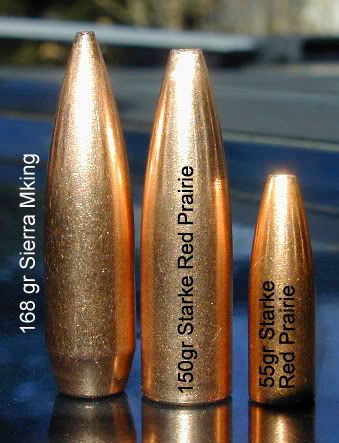Quote:
Originally posted by model 70
Not sure if thise goes here or not but I'm in the market for a new digital camera. I've noticed with some that the pics come out more clear and crisp than with others. My price range is betweem $300-400. Any suggestions?
|
As some have already pointed out, megapixels can and will affect clarity of the image. But, some cameras have "in-camera processing" enabled which can enhance the photo automatically when viewing on the monitor.
Those options could be sharpening, contrast (or levels) and other settings. I prefer to disable those settings before I take any photos and will process the images myself in accompanying photo software. Most digi images need some kind of "bumping" or enhancement. Which is why I think the new inkjet printers that accept film cards directly into the printer are a gimmick.
For the price range you are looking at I don't think you will get all that you are asking for. Check out this site:
http://www.dpreview.com/ and check out the different camera reviews there. They also have discussion forums for almost every camera manufacturer and you can ask detailed questions there.
Quote:
Originally posted by model 70
Thanks a ton. Those pics looked pretty clear to me. I forgot to mention i wanna get up real close with the zoom. would that mean i need a higher "x" when buying a camera? is it like buying a rifle scope?
|
Getting close with the zoom could mean a couple of things. Did you mean like this with the zooms macro setting?


Or did you want to fill the image frame with wildlife? If that is the case I'd suggest getting yourself a Digital SLR which will accept interchangeable lenses.
We use these two in our studio:
The Kodak 760 6megapixel. $6500 for the body

We also use the Nikon D70 6megapixel for our school sports photos. $1000 for the body.

When you look at a digicam's zoom you might see the words "optical" and "digital" zoom.
I'll say it like this:
Optical good.
Digital bad.

The optical zoom is much like the zoom on a variable powered rifle scope. Digicams and interchangeable zoom lenses list their settings as "mm" (millimeters). Fixed focal length lenses such as a standard "normal" lens (50mm) will also use the "mm" terminology.
A 300mm telephoto would be a great lens for wildlife and some shooters consider it a minimum when used for spooky game.
When you can't get close enough to a subject to fill the frame and are maxed out on the Opti' zoom, the digital zoom takes over by throwing away a portion of the original digital file (image) and interpolating that smaller file with less pixels and color info back up to the size of the original. Now you don't have to use the digital zoom but camera manufacturers try to hype that feature as being a benefit.
Another way to look at the issue. Ever see pantyhose on someone that is 4 sizes too small. Similiar principle. The pixels get just as stretched and distorted and and some things just should not be...

Mtmiller's example of the doe is also a good illustration but not as extreme. At first glance the bottom image looks sharp but on my LCD monitor I can see a slight softening of the 36x image. Compared to the top image then you can see the difference in sharpening.
Good photos btw.

Love the color.
Couple other things.
Always take pictures with the highest resolution setting that you can. You never know what the end use will be and you can always re-size down. You can interpolate up a little but eventually it'll come back to bite ya.
If your new camera has a "RAW" setting, use that for all photos unless you absolutely know that you will never need more than a Jpeg of that particualr image. Which is a good reason to get the largest film card you can as Dale said.
1Gig film cards are coming down in price and are affordable. We use two IBM 1gig microdrives for our needs. Stay away from mechanical drives though when you're knocking about in the out of doors. That is one more thing to break down on you.
Computer monitors see pixels at approx 72ppi which is pixels per inch. You will see the term DPI used (which means dots per inch) for printing purposes. A good digicam may take a high resolution image rated at 250ppi or 300ppi.
That's good.
Our 760 captures a RAW 6 megabyte file and after being processed in Kodak Photo Desk software, it is converted into an 8"x12" 18 megabyte Tiff file at 250ppi. We use Tiffs for ALL of our printing purposes. Once the Tiffs come out of Photo Desk, they are then imported into Adobe Photoshop. There I adjust Curves or Levels and Unsharp Mask. Then the images are ready for printing. We use Burrell Colour Lab in Indiana and also have an Epson 9600 wide-format printer in-house which will print 44" wide. We use that Epson for all of our display photos now and it runs with Ultrachrome inks.

With Pshop, I've cropped and interpolated my 8x12 files up to 24x30 without too much issue. But that also depends on the image being good to start with.
This is what Photoshop and the right "plug-in can help you create:


Good luck.
Btw, the bullet photos were taken with a 3mp Coolpix digicam.
We are also considering the new Fuji S3 DSLR. It is alleged to be 12 megapixels which is hotly debated due to it's new sensor technology. The images I have seen from it though are phenomal and for around $2500, it's a deal.
